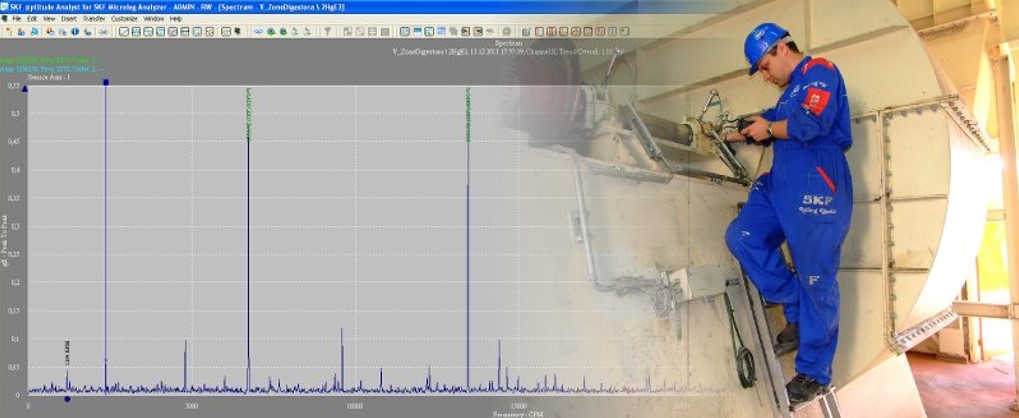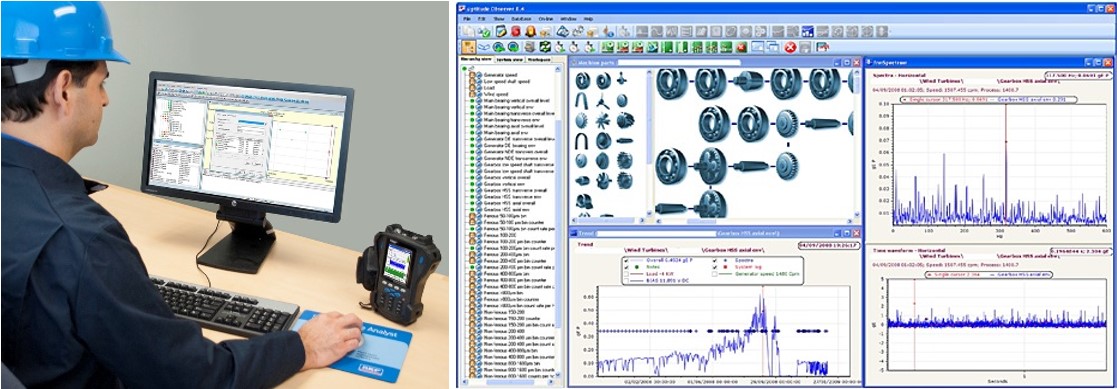Presentation
Bearing vibration measurements
Measuring and analyzing mechanical vibrations is considered to be the most effective way to determine the condition of rotating machines!
It allows us to determine the dynamic condition of machines such as disbalance, non-centeredness, soft foot, shaft curvature, bearing seizure, resonance, looseness, gear meshing problems, broken gear, electrical problem, cavitation, oil wedge instability, etc.
Measurements can be made on rotating machinery such as electric motors, pumps, fans, turbines, generators, gears, etc., and on individual machine components (bearings, gears, shafts, belts, pulleys, rotors, stator, foundation, etc.).
The method allows us to "predict" and solve a problem before it occurs. The aim is to get to the real cause of the problem, not just to deal with the consequences of it. The aim is to prevent unplanned downtime and minimize planned maintenance shutdowns. In doing so, customer risk is reduced in four areas: productivity, profitability, population, and the environment.
Details
What are vibration machines?
Simply put, it is the "up and down" movement of machinery or machine components. Any component that moves “up” and “down”, oscillates, in fact, vibrates. Machine components can vibrate in different ways with large or small displacements, fast or slow, with increased noise and temperature.

What is vibration?
No rotor is perfectly balanced. When a machine is running, a “heavy point” on the rotor generates centrifugal force. The machine experiences vertical and horizontal forces that vary sinusoidally, as can be seen in the diagram.

We use three types of sensors to measure vibration:
- Displacement sensor
- Speed sensor
- Accelerometer
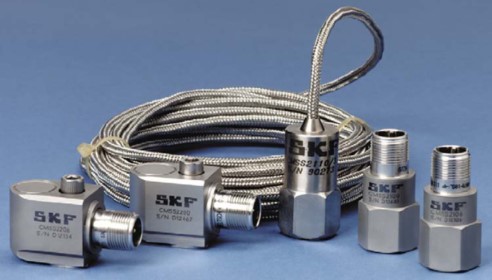
Simple vibration measurement display:
The sensor reads a combination of all signals present. A real machine forms a complicated vibration pattern. With the help of instruments and appropriate software, these vibrations can be “evaluated”.

Frequency separation:
Using the Fast Fourier Transform (FFT), we extract the individual frequencies for each machine component to obtain a spectrum envelope.
Interpreting the spectrum is not “magic”!
Knowledge of the rotating machine components and the known rotational speed will show us where in the spectrum there is increased vibration due to damage.
Interpretation of amplitude and frequency
- The amplitude of the vibration indicates the importance of the problem – the proportional magnitude of the vibration signal – the relative vibration level of the new machine
- The frequency at which the vibration occurs indicates the potential origin of the problem – also "how often" the problem occurs – pinpointing the cause or origin
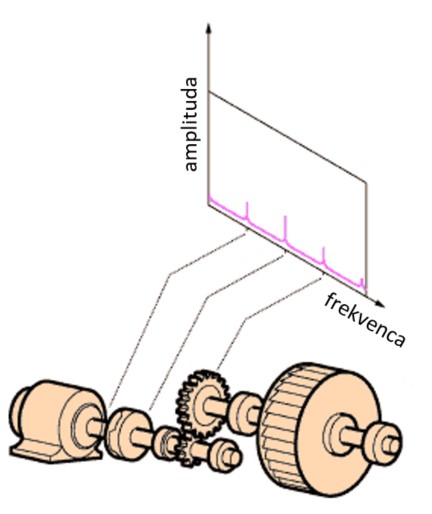
Reporting:
We will provide you with quality reports after the measurements have been taken. The report is understandable, useful and tailored to the specific client. The report includes findings and proposed solutions to correct or improve the problem.
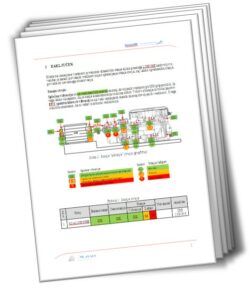
We implement the solutions offered as soon as possible.
